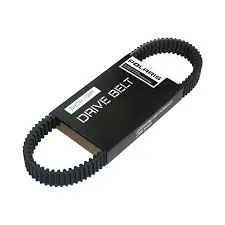- Arabic
- French
- Russian
- Spanish
- Portuguese
- Turkish
- Armenian
- English
- Albanian
- Amharic
- Azerbaijani
- Basque
- Belarusian
- Bengali
- Bosnian
- Bulgarian
- Catalan
- Cebuano
- Corsican
- Croatian
- Czech
- Danish
- Dutch
- Afrikaans
- Esperanto
- Estonian
- Finnish
- Frisian
- Galician
- Georgian
- German
- Greek
- Gujarati
- Haitian Creole
- hausa
- hawaiian
- Hebrew
- Hindi
- Miao
- Hungarian
- Icelandic
- igbo
- Indonesian
- irish
- Italian
- Japanese
- Javanese
- Kannada
- kazakh
- Khmer
- Rwandese
- Korean
- Kurdish
- Kyrgyz
- Lao
- Latin
- Latvian
- Lithuanian
- Luxembourgish
- Macedonian
- Malgashi
- Malay
- Malayalam
- Maltese
- Maori
- Marathi
- Mongolian
- Myanmar
- Nepali
- Norwegian
- Norwegian
- Occitan
- Pashto
- Persian
- Polish
- Punjabi
- Romanian
- Samoan
- Scottish Gaelic
- Serbian
- Sesotho
- Shona
- Sindhi
- Sinhala
- Slovak
- Slovenian
- Somali
- Sundanese
- Swahili
- Swedish
- Tagalog
- Tajik
- Tamil
- Tatar
- Telugu
- Thai
- Turkmen
- Ukrainian
- Urdu
- Uighur
- Uzbek
- Vietnamese
- Welsh
- Bantu
- Yiddish
- Yoruba
- Zulu
Aug . 11, 2024 18:24 Back to list
Understanding 8pk Belt Sizes and Their Applications for Various Machinery and Equipment Needs
Understanding 8PK Belt Sizes A Comprehensive Guide
When it comes to vehicle maintenance and repair, ensuring the proper functioning of the belt systems is crucial. One of the common belt sizes you might encounter is the 8PK belt, which is essential for a diverse range of applications, especially in automotive settings. This article will delve into what an 8PK belt is, its dimensions, applications, and how to choose the right belt size for your needs.
What is an 8PK Belt?
The 8PK belt, also known as a multi-ribbed or serpentine belt, features eight ribs that run along its length. The 8 in 8PK indicates the number of ribs, while PK is a standard designation used predominantly in Europe to denote the belt's type. These belts are designed for high-efficiency power transmission, providing a reliable link between the engine and various components like the alternator, power steering pump, and air conditioning compressor.
Dimensions of the 8PK Belt
The critical dimensions of the 8PK belt include its width, length, and rib height. Typically, the width of an 8PK belt is around 20mm, and the rib height is approximately 6.6mm. However, the belt length can vary significantly, which is why it’s essential to measure accurately or consult the manufacturer's specifications when selecting a replacement.
Applications of 8PK Belts
8PK belts are versatile and extensively used in many automotive and industrial applications. In vehicles, they play a crucial role in driving vital accessories powered by the engine. This includes components such as
- Alternators Charging the vehicle’s battery and powering electrical systems. - Power Steering Pumps Assisting in steering maneuvers, providing needed hydraulic pressure. - Air Conditioning Compressors Regulating the cabin temperature by compressing and circulating refrigerant.
8pk belt sizes

Beyond automotive uses, these belts can also be found in various machinery and equipment, highlighting their role in maintaining operational efficiency in both commercial and industrial settings.
Choosing the Right 8PK Belt Size
Selecting the correct size of an 8PK belt is critical for optimal performance. Using a belt that is too long can lead to slippage and inefficient operation, while a belt that is too short may cause excessive strain on components resulting in premature wear. Here are a few steps to ensure you choose the right size
1. Check the Owner's Manual Most vehicles and equipment come with specifications for the required belt size. Refer to the owner's manual to find the recommended dimensions.
2. Measure the Existing Belt If you’re replacing a belt, measuring the old one can provide an accurate size. Use a tape measure to get the length and check the width and rib configuration.
3. Consult the Manufacturer If you're unsure or if the belt is for industrial equipment, reaching out to the manufacturer can help clarify which size you need.
4. Consider the Application The specific needs of your application can play a role in sizing decisions. For example, high-performance vehicles may require belts designed for extreme conditions.
Conclusion
The 8PK belt is a critical component in many vehicles and machines, ensuring the efficient transmission of power to essential systems. Understanding its sizing, applications, and the importance of choosing the right belt will not only enhance the performance of your vehicle or equipment but also extend its lifespan. Always prioritize quality replacement parts and consult professionals when in doubt to ensure your machinery runs smoothly and reliably.
-
Korean Auto Parts Timing Belt 24312-37500 For Hyundai/Kia
NewsMar.07,2025
-
7PK2300 90916-T2024 RIBBED BELT POLY V BELT PK BELT
NewsMar.07,2025
-
Chinese Auto Belt Factory 310-2M-22 For BMW/Mercedes-Benz
NewsMar.07,2025
-
Chinese Auto Belt Factory 310-2M-22 For BMW/Mercedes-Benz
NewsMar.07,2025
-
90916-02660 PK Belt 6PK1680 For Toyota
NewsMar.07,2025
-
drive belt serpentine belt
NewsMar.07,2025

